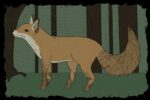Typology, like the Enneagram and the Myers-Briggs Type Indicator (MBTI), can be helpful in learning more about yourself or those around you. But what about the fictional world? By taking the ideas of typology and applying them to character creation, you can develop wildly differing characters at a deeper level than you might have otherwise seen.
The Enneagram and the MBTI approach personality in two entirely separate ways. As a result, they can be used to describe characters in two separate ways. The MBTI focuses on how people — and characters — think and how they relate to others, while the Enneagram focuses on what people value and fear. Which typology framework an author decides to find first depends on the writer. That said, starting with how someone thinks often provides the best base, so beginning with MBTI makes the most sense.
Many stories favor the third person point of view that adheres closely to a single person in each scene. The reader is privy to that character’s thoughts and internal emotions as well as the actions and words of everyone else. Reading from a character’s point of view can forge an intimate knowledge of the character unlike any other. Of course, in order for each character’s point of view to provide that unique look inside, each one has to have a different way of thinking. That’s where MBTI comes in.
The MBTI breaks down ways of thinking into sets of four “cognitive functions.” Some are inward and take information from the self to apply to the world. Some are external and take information from the world to apply to the self. Every person has four of these functions, which work in descending order. For the purpose of writers, the breakdown goes essentially like this:
— The dominant function describes how the character will work most frequently and most easily, and should be the most obvious to find in their thoughts and actions.
— The auxiliary function backs up the dominant function. It isn’t as natural to use, but should be easily visible in the way the character is written.
— The tertiary function develops later in life, usually beginning during the late teens, and sometimes later. Developing the tertiary function might depict the maturing process of a younger character, and a well-handled tertiary function in an older character can help show the depth of a character’s skill.
— The inferior function doesn’t develop until after everything else, and is often a trait that a person finds significantly harder to use. In characters, this presents a chance to show a flaw or blind spot.
Reading up on each individual function and then applying them in these ways will fill your characters with an undeniable uniqueness visible through the text and enriching any character.
The Enneagram comes into play when considering what characters care about avoiding and maintaining. There are nine types, and each comes with a different set of worst fears as well as most prized values, as well as how each type is most likely to react when at points of major stress or growth.
For an author, there is no more important question than “what does the protagonist want?” Common answers include love, money or safety. Equally important is the follow-up to that question: “And why can’t they have it?” Together, these two questions form the basis of any story’s plot. Therefore, it’s vital that for a character to have a goal they’re willing to risk everything for, and obstacles they’re afraid of confronting in the process.
In writing, the components of the Enneagram can be broken down like so:
— The characteristic role can be thought of as the basic archetype a character falls into. Each Enneagram type provides a certain stereotype — many have their origin in fables and fairy tales.
— The ego fixation is what the character might succumb to while trying to reach their goals. When stressed, this is the behavior the character will most frequently exhibit.
— The holy idea is what the character most wants to be or achieve. It’s often conscious, but characters can sometimes be blind to the reality of what they want. Taken to an extreme, attempts at making the holy idea a reality often leads to disillusionment, which can fuel the character’s arc further.
— The basic fear is just that — the fear that drives a lot of the character’s decisions. This is usually the worst fate a character can imagine, and they’ll go far out of their way to prevent it from happening. Of course, threatening them with this very fear is precisely what the author does to evoke the most powerful emotional response from the character.
— The basic desire is what the character most wants. It’s similar to the “holy idea,” but think of it this way — the holy idea is how the character wants to achieve their basic desire. This is fundamentally juxtaposed to the fear, so as an author, the basic desire becomes the guiding light through the character arc.
— The temptation is the core that the ego fixation comes from. Just as the holy idea is the “how” of the basic desire, the temptation is the “how” of the ego fixation.
— The vice is the emotion most likely to create a thorn in the character’s side. When a character faces conflict, this is the emotion they’re most likely to react with.
— The virtue is the trait the character will develop upon completing their character arc. At the beginning, it likely seems impossible to achieve but, little by little, is developed almost without the character knowing.
— The disintegration comes into play when characters hit rock bottom. In the Enneagram, when types hit a point of major stress, they often borrow the negative traits of another type. For writers, this presents a useful opportunity to depict characters changing with the weight of all they go through without losing the base of who they are. Characters react to grief or anger differently, and the Enneagram can show you how your characters are most likely to react.
— The integration presents itself when a character is toward the end of their arc and has achieved a secure state of mind. Each Enneagram type borrows traits from a different type when they approach this secure state, and knowing what traits to integrate as a character approaches their best self can help authors show how characters might change while still retaining the same base as always.
Each of the nine personality types offers different answers for each of these areas, and the application of each can create an endless variety of three-dimensional characters.
The most obvious use of typology lies in the point of view character, but its uses reach far beyond that. Even characters who will never be POVs can benefit from either or both of these typology frameworks, as each one deepens a character on levels that an author might struggle to dive into without help.
Every author has a type of their own, as well, and so it can be easy for authors to favor their own types in making characters. They might even become blinded to the true nature of other types due to their own perspective. By using typology to ensure that each character is unique, authors broaden their own ability to write about other personality types, and can therefore appeal to broader audiences.
















